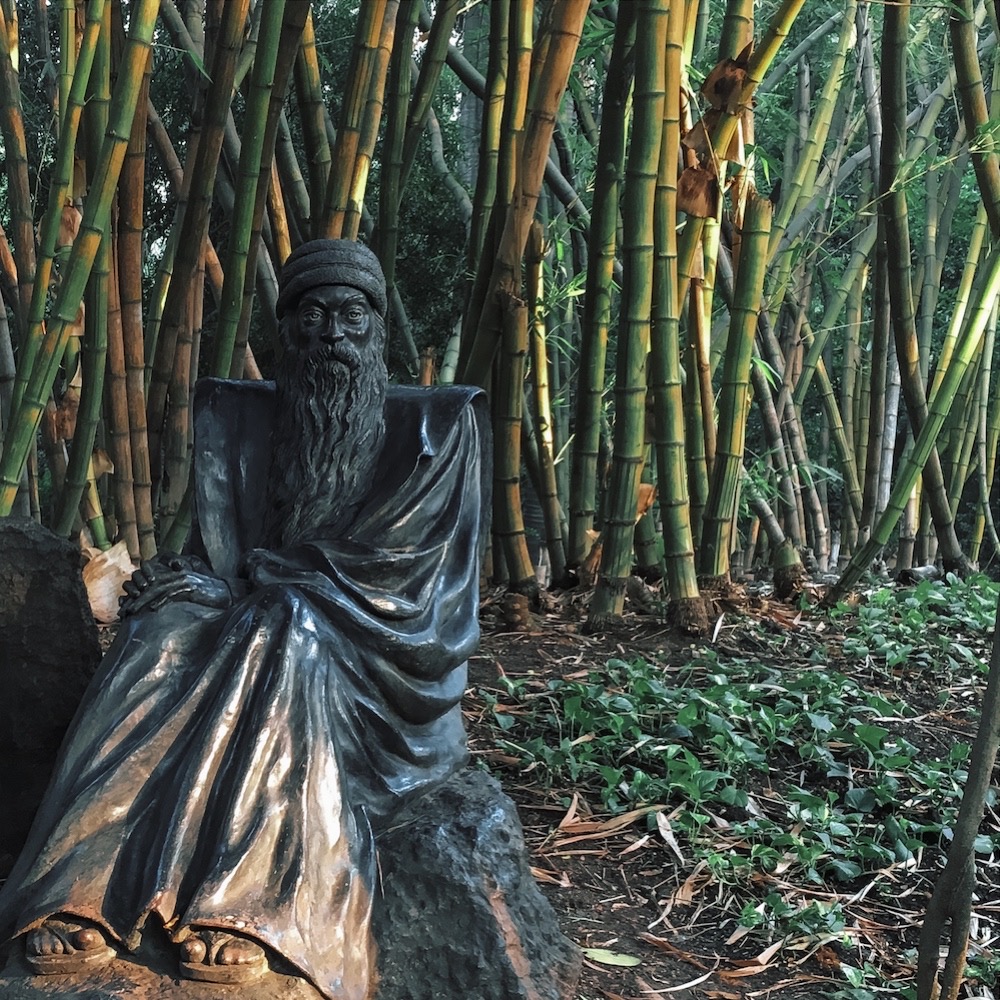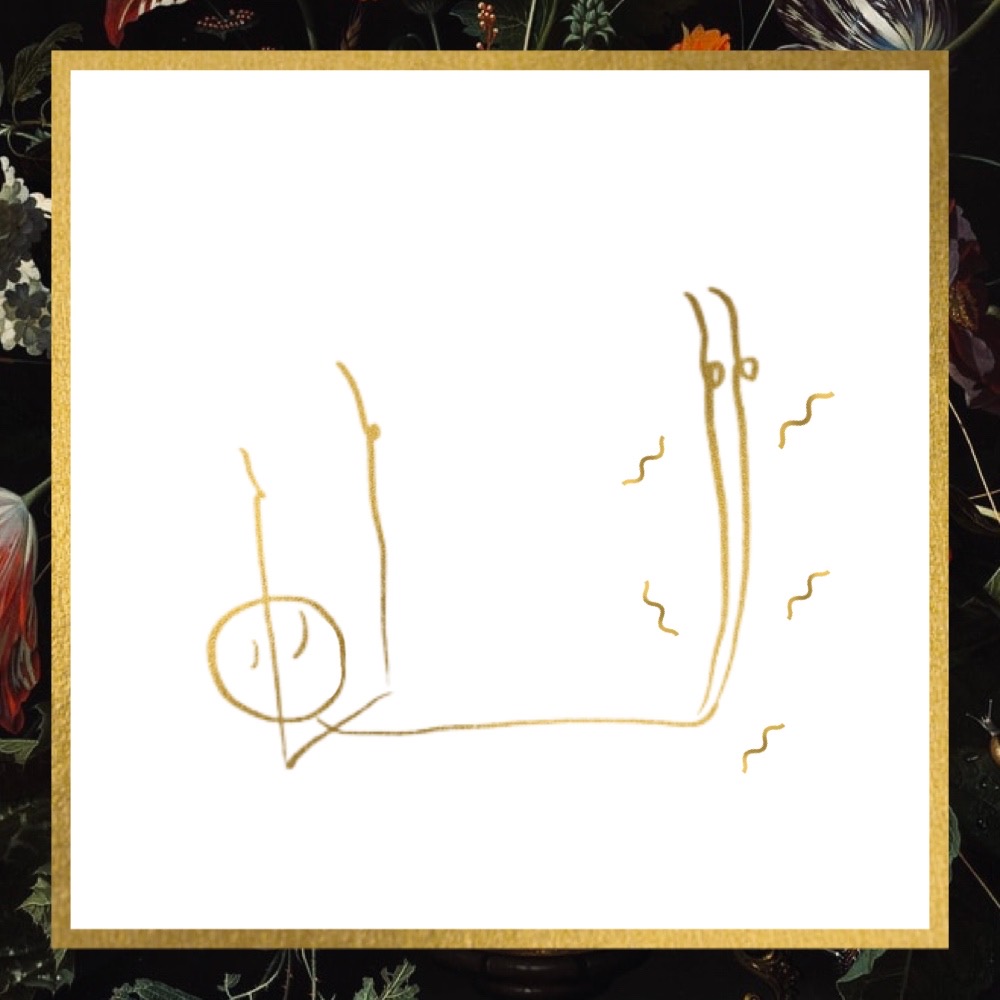Through both modern approaches, with a focus on nervous system regulation, and ancient ‘healing’ traditions, to shake the human body as a means to experience oneself differently is a popular and intriguing concept.
In Kundalini Global we will, at times, bring in practises, postures, that can bring a tremor or shake to the body. One such example is the posture where we lie on our backs with our arms and legs straight up (see stick person image below), which comes up in the yoga series we work with quite regularly and where, after a somewhat benign start, the legs and pelvis often tremble in response to muscular tension.
Teachers may say ‘this is a normal response’ and some may encourage you to allow it to happen to allow the release stress and tension… but is that really a beneficial thing to do? And why?
Kundalini Shaking

The one hour practise of Osho’s Kundalini Meditation is perhaps best known for its first part: letting the whole body shake. Said to be a part in helping “to “melt” the rocklike being, wherever the energy flow has been repressed and blocked.”
In China, there is a 2,000-year-old tradition that is said to bring a shaking response through flexing the fingers and feet. This is known as Waidangong.
The Japanese practice of Seiki Jutsu is another form of what is sometimes called ‘shaking medicine.’
Shaking as a spiritual practice may be offered or framed as a way of clearing blockages, finding your ‘true self’ …and similar, enticing, claims.
Nervous System Regulation?
In a more modern/physiological way of thinking, many teach that shaking lands us into a parasympathetic nervous system response, a more relaxed state of being.
Through this lens, shaking the body is a means to release tension and help regulate the nervous system.
As you may well have experienced for yourself, we shake involuntarily after challenging/shocking/intense experiences. An example may be the intense shaking that many experience after giving birth. When we get shaky, when we shake, our social conditioning means we often feel we ‘should’ stop.
For The Mind Body Connection?
What those who teach therapeutic or neurogenic tremoring would suggest is that we shake due to an in-built mechanism to reset muscle tension.

To allow the shaking is to release stress and build the mind-body connection… rather than rejecting the body’s response to what the mind has perceived.
As we work with all the time in Kundalini Global, when we perceive a threat, stress hormones flood our system as part of us a stress response to help us run away, fight, or curl up and hide. And then we can shake. One area of study says that this shaking is one way the body works to soften activity in the hypothalamus-pituitary-adrenal axis.
The social conditioning that tells us to not allow ourselves to allow such experiences to be as they are… to jump out of them, in whatever way we choose for ourselves (how, as Carolyn Cowan would describe it, we choose to ‘act out’ or ‘act in’…) keeps us in a kind of loop in how we experience things.
We reject the feelings, and so we act in a way that allows us not to experience them temporarily (drink, scream, attack, run away), and that, or the wider impact of that, leads to more… more stress, more anxiety, more tension… which we then, again, reject our physical and thinking response to… and on and on it goes.
The theory, then, would be, that if we let the shaking happen, if we put down a need to jump over it, it kind of ‘moves through us’ and we begin to… it is a way to… create a kind of circuit break in that loop.
Has Shaking Been Studied by Scientists?
It appears that shaking as a way of regulating the nervous system, soothing the stress system, has not been widely studied scientifically, although studies do exist.
For example, this small study, which showed a significant reduction in cortisol (a stress hormone) levels when the participants were tested after 21 days of a shaking meditation.
Osho Dynamic Meditation’s Effect on Serum Cortisol Level
We struggled to find many more, but if you have links to any peer-reviewed research into shaking as a way to heal from trauma or similar, we would love to read them so do comment with links!
It makes some logical sense that shaking the body would help take us out of a fight or flight response.
Being aware of the body helps. Moving the body helps. Stretching helps. Singing helps. Anything that encourages us to be in the body, to notice sensations of the body, helps. Anything that creates stress and tension in the body and then allows it to release helps…
All of these things, either during or, more often, after doing them, help by signalling to the body/mind that it can send a message, through the vagus nerve, that it is safe enough for the stress response to dissipate, stand down. And this signal will change hormonal flow within the body, allow muscle tension to be released, which will slow the heart rate, breathing etc.
Add this to the fact that in nature, animals really do ‘shake it off’ when something traumatic happens (if you want more on this, the book Why Zebras Don’t Get Ulcers may be of interest) and for those who need some scientific, or at least a more pragmatic, reasoning behind an invitation to shake their whole body to feel better, may feel that to allow the shaking to come in posture, when it does, is an idea worth pursuing.
Practitioners of practises such as TRE, a ‘series of exercises that assist the body in releasing deep muscular patterns of stress, tension and trauma.’ claim that if our shaking mechanism is activated in a safe and controlled environment, the body is encouraged to return back to a state of balance.
As always at Kundalini Global, we would never make a claim that something like shaking will heal you from all that has happened in your life, from trauma, or anything close to that.
We would always say that when it comes to trauma release, yoga is never the answer, but is a tool you can use as a part of your self care on your path through. But to consciously choose to shake, in most instances, if you’re in a safe enough environment, is a relatively harmless thing to try and the impact on the body and mind may be quite lovely afterward.
For anyone who doesn’t enjoy sitting still (that’s most people, we observe), a shaking form of mediation, a moving form of meditation, may particularly appeal.
You can explore for yourself to see if it is something that appeals and works for you. And if you do, or you already work with shaking as a theraputic, spiritual and/or healing practise, do let us know your experiences in the comments, we’d love to hear.

